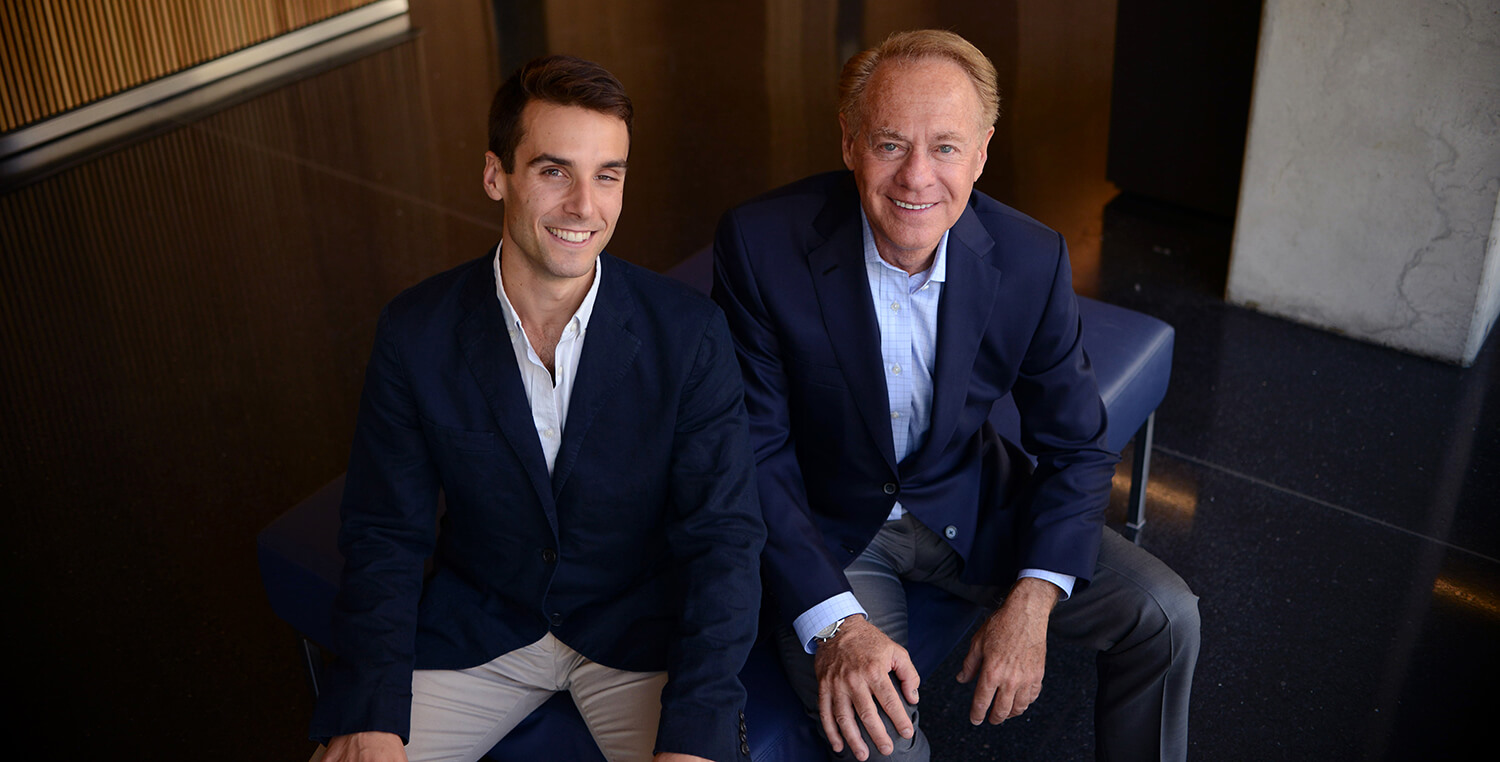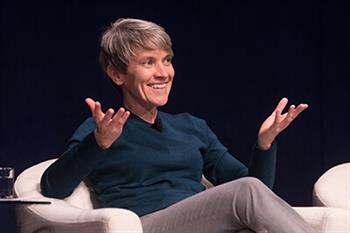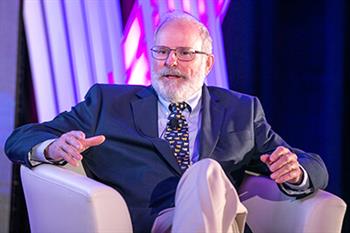Window on the Future
 Together at a recent meeting, Ian Penkala, ENG ’13, VMD-PhD ’21, and Mark D. Spitzer, W ’71, had the easy affinity of longtime friends. In reality, the two Penn alumni met only recently in a partnership of sorts. Through his participation in The Power of Penn Vet Campaign, Spitzer, Chair of Penn Vet’s Board of Overseers, supports the Tracy and Mark Spitzer Endowed Scholarship Fund for research-oriented graduate students. Penkala is the scholarship’s first recipient.
Together at a recent meeting, Ian Penkala, ENG ’13, VMD-PhD ’21, and Mark D. Spitzer, W ’71, had the easy affinity of longtime friends. In reality, the two Penn alumni met only recently in a partnership of sorts. Through his participation in The Power of Penn Vet Campaign, Spitzer, Chair of Penn Vet’s Board of Overseers, supports the Tracy and Mark Spitzer Endowed Scholarship Fund for research-oriented graduate students. Penkala is the scholarship’s first recipient.
Philanthropy Translates to Breakthroughs
“Education was very important to my parents. They grew up in New York City during the Great Depression and left high school to work,” said Spitzer, co-founder and principal of the Clinton Companies, a holding company engaged in real estate investment. “I received scholarships and low interest loans to attend Penn. Now it’s my turn — I’m privileged to be able to give back and support intelligent, curious Penn Vet students interested in scientific discovery.”
Research, specifically the School’s VMD-PhD program, is what drew Penkala to Penn Vet. “I worked in a Penn Vet lab as a chemical engineering undergrad,” Penkala said. “The experience inspired me to be a veterinarian and study here. No other school offers the rigorous combination of biomedical research and clinical teaching.”
A member of the pulmonary-focused Morrisey Lab and collaborator with the Frank Lab, both at Perelman School of Medicine, Penkala studies alveoli, air sacs in the lung that exchange oxygen and carbon dioxide with the bloodstream. He’s interested in their role in respiratory diseases.
He referenced his recent discovery about hyperoxic lung injury (HLI) in mice, which mimics the type of injuries premature babies face when overexposed to oxygen. “Researchers don’t understand why the lung is injured, what cell types are injured,” he explained. "I found this one particular cell type is very plastic in the neonatal period and affects how the lung regenerates following injury."
The persistent injury results in a less rich surface area for the gas exchange as the animal ages. Adult mice that once had HLI seem fine, but when they exercise, they don’t succeed like their litter mates who were never exposed to hyperoxia.
“It’s somewhat of a model we see in clinics with kids who were preemies. They appear healthy as they age but then can’t play sports in high school or overexert themselves, and we’re trying to figure out why,” said Penkala. “So, this cellular plasticity, in particular of this one cell type, is a unique view of why this disease is persistent. I’m investigating signaling mechanisms on how it happens.”
“Ian is going to make a difference; studies like his can have a direct translational application to premature babies,” said Spitzer.
"Window on the Future"
Spitzer has served on the Board of Overseers since 2012 and now heads it with Vice Chair Martin E. Winter, G’76, W’76. “This is an exciting time for Penn Vet,” said Spitzer, who is working with the School’s leadership to determine additional avenues for his philanthropy. “I joined as former Dean Joan Hendricks led the School through a serious threat of state budget cuts. She persevered and put us on a visionary One Health track. Today, the School is fiscally strong and has a dynamic dean in Andrew Hoffman. We’re a real window on the future, focused on where science and medicine need to go.”
Spitzer’s philanthropy is catapulting Penn Vet into the future. Scholarship gifts like his enable talented students like Penkala to pursue clinically focused research careers and solve pressing health challenges.
“Mark’s support made coming to Penn Vet possible for me — it would have been financially unfeasible otherwise,” said Penkala. “I’m using my graduate school stipend to pay off my undergrad loans. Without this opportunity, I might have worked in an engineering firm and not become involved in research at all. Mark’s generosity has completely changed the course of my life.”
The Power of Penn Vet Reaches Around the World
During the past year, Penn President Amy Gutmann has traveled across the U.S. and internationally to present the Knowledge for Good panel series. Part of the University’s $4.1 billion The Power of Penn: Advancing Knowledge for Good campaign, the event features distinguished Penn faculty from different schools in conversation with President Gutmann about the University’s plans to grow inclusion, spark innovation, and accelerate impact around the world. Penn Vet took the stage in two events.
 San Francisco, October 2018
San Francisco, October 2018
More than 300 alumni, parents, and friends attended the San Francisco Campaign Kickoff Celebration for The Power of Penn: Advancing Knowledge for Good. Penn Vet’s Dr. Nicola Mason, Paul A. James and Charles A. Gilmore Endowed Chair Professor, shared a panel with Amy Hillier, Associate Professor, School of Social Policy and Practice, and Jamal J. Elias, Walter H. Annenberg Professor in the Humanities, Penn Arts and Sciences.

Hong Kong, March 2019
For an audience of more than 400, Penn Vet’s Dr. David Galligan, Marilyn M. Simpson Endowed Chair Professorship in Large Animal Clinical Studies, participated in a panel with Winka Dubbeldam, Miller Professor and Chair of Architecture, Weitzman School of Design, and Karl T. Ulrich, Vice Dean of Entrepreneurship and Innovation and CIBC Professor; Professor of Operations, Information and Decisions at The Wharton School. Galligan spoke about his work to improve the health and productivity of animals in the dairy and agricultural industries while limiting damage to the environment.